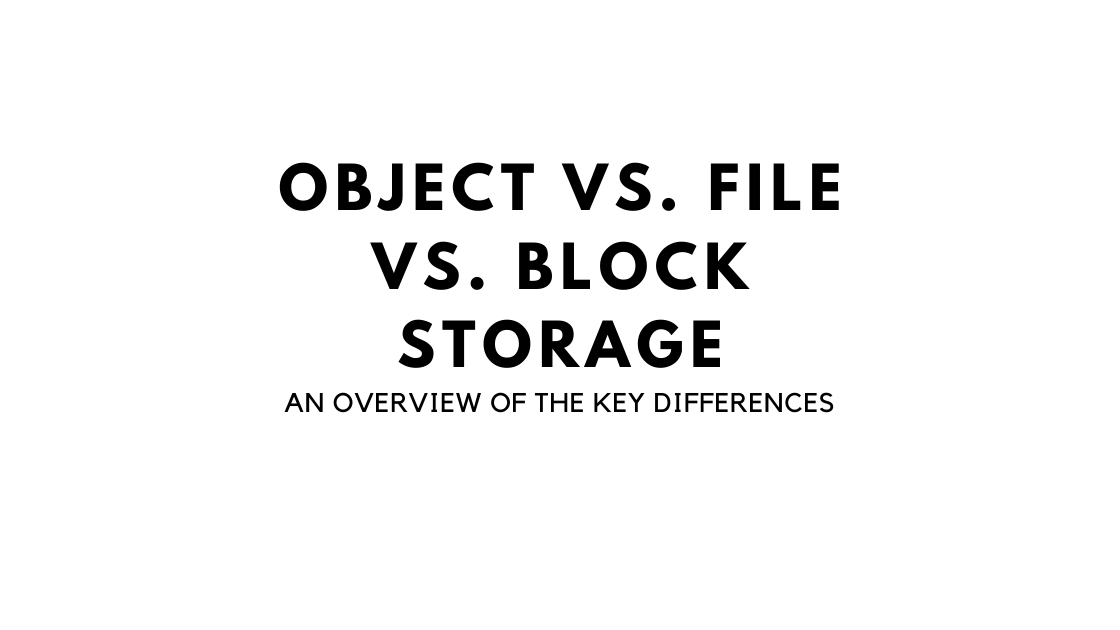Data storage containers are various tools that technology industry professionals use to present and organize the data of applications and business processes.
Not all data storage containers are the same, as each type touts different advantages. Data storage containers are classified under three primary types: object storage, file storage, and block storage.
As well as having different strengths, these different types of data storage containers also have varying limitations and disadvantages in the context of Kubernetes and cloud computing.
Knowing when and where to use what type of data storage could be a critical difference-maker in taking your applications and business processes up to the next level of scalability.
Block storage
Block storage transforms and splits data up into smaller blocks. This method of cutting files into pieces is convenient for splitting relevant systems data from redundant data while still having access if necessary.
Instead of loading and querying an entire file, you can get a bite-sized version of the file through the data stream that is less taxing on the servers. With resources such as these in your artillery, the deployment of highly available persistent block storage is made possible.
The disadvantage of the convenience of block storage is that it is more expensive than the other types of data format. Unlike its object and file storage counterparts, block storage struggles with handling metadata natively, often requiring a custom workaround solution that your systems manager will have to figure out.
Object storage
The object storage format primarily focuses on managed data associated with metadata tags.
In object storage, data is broken down into separate pieces called objects and kept in a single location.
This process is kept as files or blocks on servers rather than saved as files in folders. These objects act as self-contained units with a unique metadata identifier to be searched through a data management system.
This metadata carries essential searchable details like age, date created, read rules, access contingencies, and security risks in your storage system.
The advantage of object storage is that the metadata and its essence as a discrete object mean that highly detailed information is easily accessible about the files by file search systems.
This distinct advantage is vital in industries where storage operating systems need precise and finely tuned searches to be queryable, like in cases of public cloud storage and static data.
Another advantage of object storage is its cost-effectiveness for keeping track of large amounts of data, making it very scalable as data demands rise and business operations continue to grow.
You only have to pay for the objects that you use, making it easy to fine-tune your storage costs and needs on the fly.
The disadvantage of object storage is that because objects are discrete entities, they cannot be easily overwritten, which can be an issue when data needs to be updated or changed consistently.
Traditional types of data storage also struggle with object format storage because of this difficulty of rewriting. The process of rewriting is slow because of how complicated object creation is, and older storage systems will struggle to maintain uptime effectively.
File storage
File storage is the easiest to understand of all the formats. The file itself is stored in a series of folders that contain a folder path that a data search process would have to know to access that file.
To imagine a non-virtual example, this format fits the description of a physical filing cabinet. The correct drawer needs to be opened and the right tab to retrieve the particular file you want.
Each file needs to be organized in a hierarchy written for the data storage and is the oldest example of virtual file storage that you have probably been using for many years.
This simplicity in designs makes it easy for data search programs to use and makes it easy to overwrite files that need to be updated as the address is required to correct it.
It has a tough time with scalability because to add more room for data, you need to add whole extra systems to accommodate them. As different systems get added, the length of addresses and data queried increases and taxes your business processes.
Final thoughts
What data storage system you will be using depends on your unique situation.
Armed with the knowledge of how these data storage formats interact with new and traditional data storage applications and methods, you will be able to make an informed choice for your business processes.






